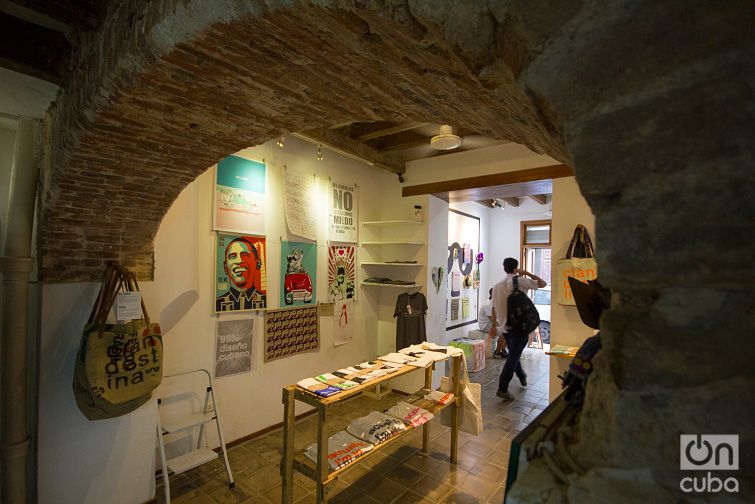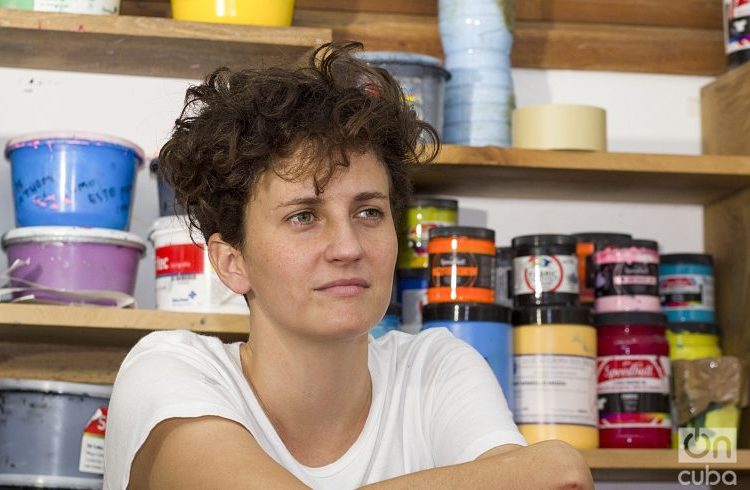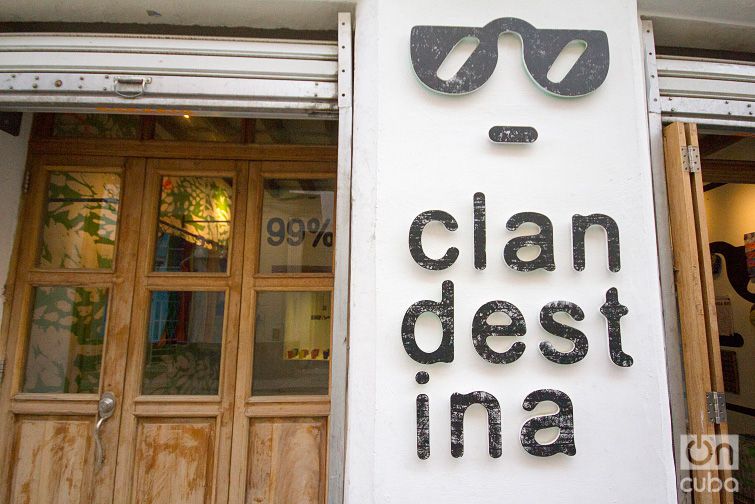At first sight, Idania del Río looks like an adolescent. Slight, disheveled, with a clear look in her eyes, almost innocent. But once she starts talking her expression changes, her features harden, and then an unforeseen strength in her slimness comes to the surface.
Born in Havana in 1981, Idania is one of Cuba’s most renowned young designers. After graduating from the Higher Institute of Industrial Design, she has accumulated a curriculum that includes international poster, book and magazine illustration exhibitions, the art direction of theater projects, animation works in Uruguay and awards like the Cubadisco for graphic design.
“A stroke can have a great many meanings,” she affirms when I ask her about her vocation. “There’s nothing more exciting than being able to suggest, being able to transmit one or many ideas with an image.”
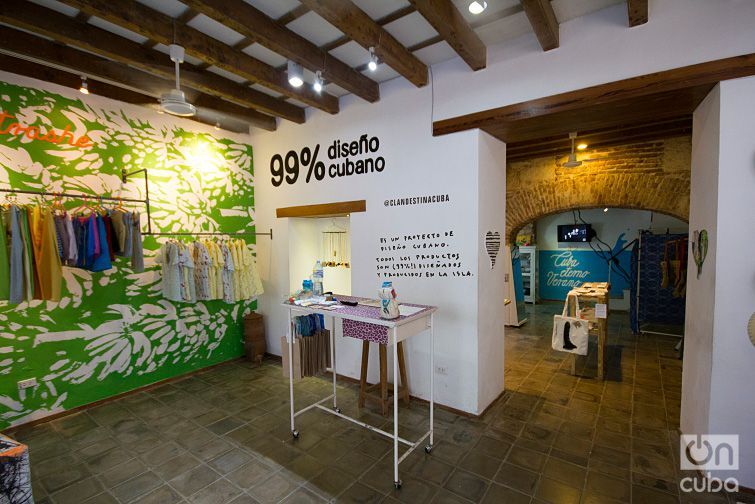
She speaks without boasting, but with evident propriety. If the subject of the conversation is design, she shows the maturity of an acclaimed person. She appeals to the artistic vision materialized in her career. She walks on terra firma.
She decries the lack of style of the designer, that it can only be the channeled between a message and a client as is usually affirmed in the academy. “Connecting things is fundamental,” she affirms, “but so is creating, proposing. That’s why I have been increasingly putting my trust in what I have to say.”
And what Idania del Río has to say is surprising.
Her aesthetics captivates for its apparent simplicity, but her drawing recalls that of a child although there is nothing naïve in her proposals. Humor, she specifies, is one of her creative keys.
“I am not the most fun persons in the world, but I believe that a sense of humor is of great help when confronting problems, the things that happen every day. It’s something I enjoy, because life in general is rather difficult, and if you don’t have a sense of humor then it is more difficult. That’s why my work always has a bit of humor, a sort of positivity that is very inherent in me. I want everything to be right, that everything be nice, although not because of this am I alien to the things that are really not like that.”
Idania feels her creative work as “a zone of a lot of peace.” “When I have problems it’s always good for me to do something; as well as when good things happen. Somehow I feel protected by doing this.”
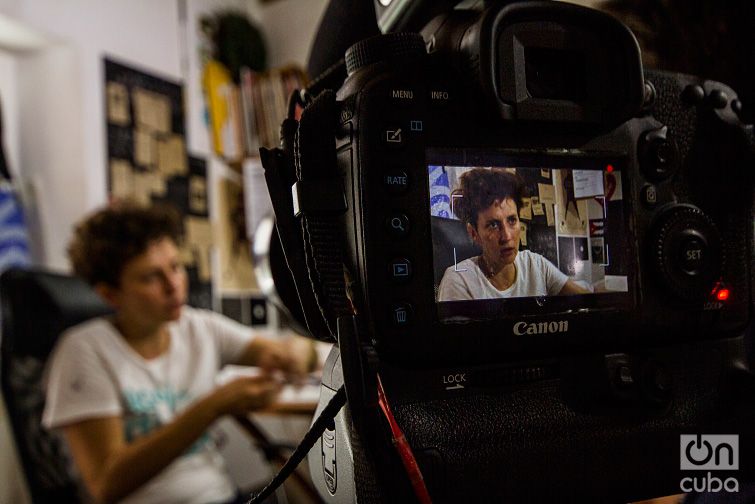
However, far from the peacefulness that her words suggest, today she spends a great deal of the day “upset because of the stress of the work.” Hers, she says, is a “creative upsetting,” a “boost to start working.”
The blame for this stress is Clandestina, the design shop-studio she opened in February 2015 in Old Havana together with Spaniard Leire Fernández. In it, the artist has put all her experience and will.
“For me Clandestina has been like a capsule where I have been able to develop many aspects of my profession. I’ve worked the identity in the design, which is something that always interested me, and I feel I have grown a lot. But I also get upset when there are things I can’t do. There are still many technological limitations, of materials, of perception, and that can be frustrating. But above all this, the best part is always to achieve a competitive product. It’s like learning something every day.”
The beginnings, she recognizes, were complex. “When we started we were simply two busybodies, two outsiders in an almost unknown world, we were clandestine. That was our philosophy. And although we have had to learn on the way, we are interested in maintaining that profile, to continue distanced from the most homogeneous fashion, the fast fashion.”
One of the concepts that distinguish her project is the 99{bb302c39ef77509544c7d3ea992cb94710211e0fa5985a4a3940706d9b0380de} Cuban. Idania has it on her T-shirt during the interview. “We knew that it could work because it is provocative. Cubans love to highlight what is theirs, so for us it has served as a letter of introduction. It’s not 100 because it would be absolute, very boring, and I believe that nothing should be 100{bb302c39ef77509544c7d3ea992cb94710211e0fa5985a4a3940706d9b0380de}.”
With concepts like this one and lines like Clandestina and Vintrashe, the project has become consolidated. T-shirts, bags, hats, pillow cases, posters and glasses are some of the products sold in the shop, a few meters from Havana’s Plaza del Cristo.
The designer sees in the recognition achieved not only an individual but also a collective success, the achievement of persons – she, Leire, their workers – committed “in going as far as possible.” But Idania is, undoubtedly, the soul of Clandestina.
In April 2016 she was among the Cuban entrepreneurs who met in Havana with Barack Obama. At the time she defended before the U.S. president the benefits that the lifting of the embargo would bring to the island’s economy and particularly to its nascent private sector.
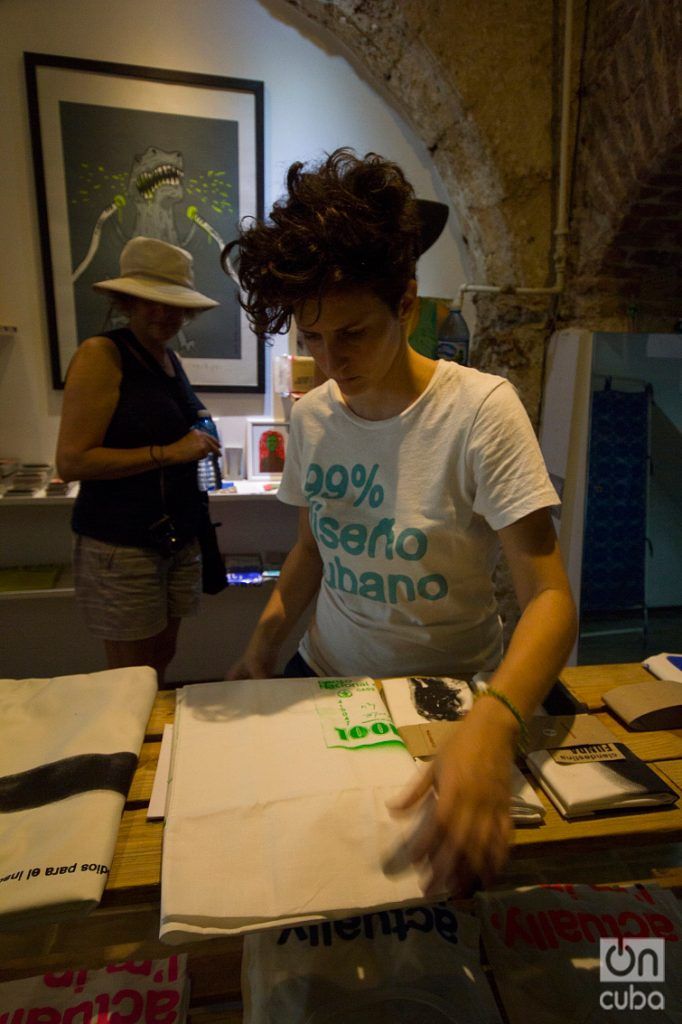
One year later, in times of Donald trump, Del Río continues being optimistic. “Cuba is at a good moment now,” she affirms. “There are many people looking, persons from all over the world interested in what is happening here, and I insist to my friends that they get their act together because we don’t know how long this window is going to last.”
Idania regrets not being able to do more, not being able to materialize all her creative interests as she would like. At the same time, she feels proud of having been able to inspire others to follow her path, especially the women.
“I like that women can see us as a sort of model. And I say this without smugness, because men also work with us. But I believe that what we have achieved demonstrates that it can be done, that it’s worthwhile trying, that you have to believe in yourself to overcome the difficulties and continue.”
With that compass Idania del Río looks to the future.
“I like to imagine great things, but I have learned that success is achieved day by day. Little by little, without running, we have been accumulating experience; we have more work to show. That has been opening doors for us and that’s how we plan to continue so that Clandestina is what we dreamed of. Work is always the key.”
